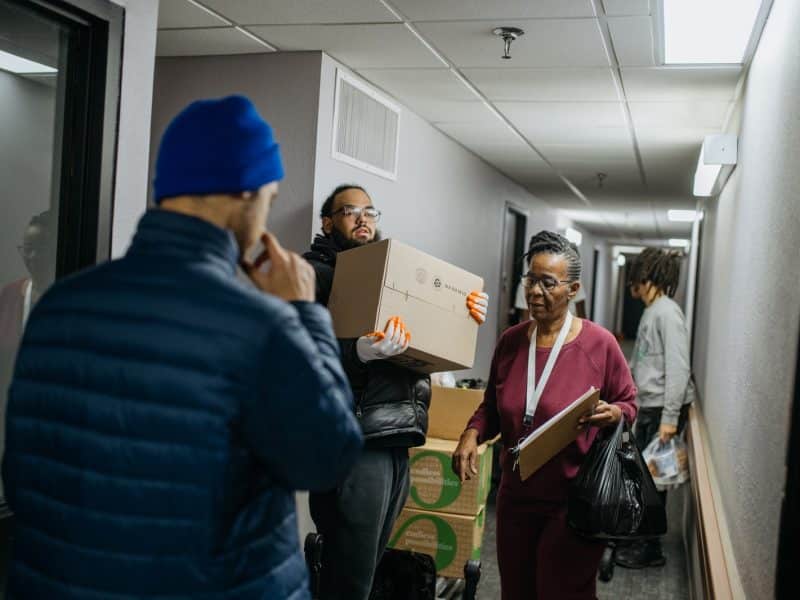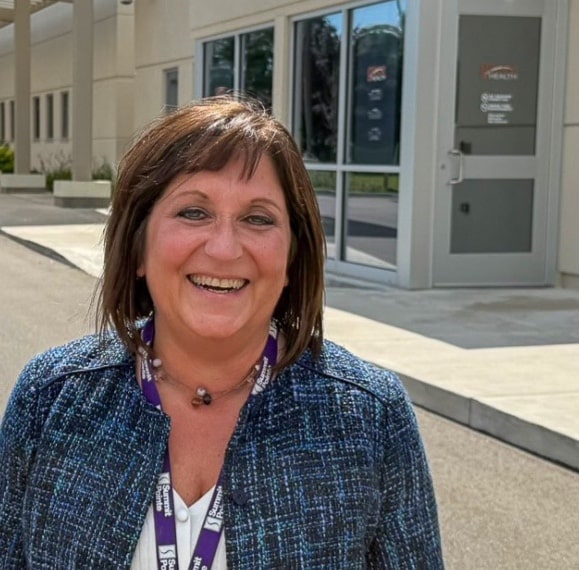
Over half a million Michiganders stand to lose their coverage again whenever the federal government revokes the public health emergency declared in January 2020.
This article is part of State of Health, a series about how Michigan communities are rising to address health challenges. It is made possible with funding from the Michigan Health Endowment Fund.
According to the Michigan League for Public Policy (MLPP), over half a million Michiganders joined the state’s Medicaid health insurance programs during the COVID-19 pandemic, bringing the total number of Michiganders receiving Medicaid health insurance to 3 million. But they stand to lose their coverage again whenever the federal government revokes the public health emergency declared in January 2020.
The federal Families First Coronavirus Response Act of 2020, passed in March 2020, guaranteed uninterrupted Medicaid coverage for enrollees for the duration of the pandemic public health emergency regardless of changes in income or other factors. So, despite the upheaval caused by the pandemic, the nation’s uninsured rate actually decreased in 2020, in large part due to this continuous coverage provision and Medicaid.
“The [Families First Act] was one of the first major things that we were doing as a nation to address the COVID pandemic. This helped both individuals as well as health systems and provider organizations to provide continuous care for some of the most vulnerable people in the state of Michigan,” says Monique Stanton, MLPP president and CEO. “It’s so important for individuals to have access to health care coverage, especially during a pandemic, but anytime they need physical health care as well as behavioral health care.”
As the public health emergency winds down, experts in public health and public policy fear that vast numbers of Americans will lose their coverage and suffer dire health consequences if they no longer can afford needed health care. On May 18, 2022, the national Center on Budget and Policy Priorities (CBPP) held a briefing to highlight how states can ease this transition by prioritizing three core areas: finding ways to reach out and effectively communicate with Medicaid enrollees; streamlining the Medicaid renewal process; and helping individuals who are no longer eligible for Medicaid to successfully transition to other types of programs. Because President Biden has not issued the 60-day advance notice required for ending the current public health emergency, which is set to expire in July, the next possible end date will be in mid-October.
“What’s unique about this moment is that we actually have a little bit of certainty, something that’s been really hard to come by during the pandemic. We now know that we have at least five more months before the public health emergency ends,” says Jennifer Wagner, CBPP director of Medicaid eligibility and enrollment. “State officials have more time to plan and implement changes that protect coverage for people. And with examples of best practices from other states, as well as guidance and waivers from [the federal Centers for Medicare and Medicaid Services], there are many things that states can do to minimize coverage loss at the end of the public health emergency.”
Pandemic changes can inform Medicaid moving forward
During the pandemic, millions of people have faced housing instability, many have moved, and many have new contact information as a result. Most people have not been in touch with their state department of health and human services since the pandemic began. CBPP staff say now is the time for those agencies to reach out to their insurance plans and the United States Postal Service to confirm contact information so enrollees know when and how to take action to continue their coverage. State agencies also need to develop public-facing outreach and materials that are easy to understand and available in multiple languages.
“We don’t have to go back to how things were pre-pandemic, where we often saw hours-long wait times at call centers, reliance exclusively on mailed notices for critical information, and eligible people frequently losing coverage at renewal and not finding out until they went to get their prescription filled or to see a doctor,” Wagner says. “This presents an opportunity and an obligation for states to put in place policies and systems that change fundamental things in Medicaid, like how they communicate with their enrollees, how they partner with community groups and managed care organizations, and how they use electronic data sources to verify eligibility.”
During the briefing, state agencies were urged to adopt user-friendly methods to reach people – for example, texting and email – as part of efforts to streamline the Medicaid enrollment process.
“We know that about 97% of people with incomes less than $30,000 per year have a cell phone. Text messaging is quickly becoming the norm for how individuals want and expect to receive updates. States should be responsive to this,” says Farah Erzouki, CBPP senior policy analyst. “People oftentimes lose coverage for procedural reasons during the renewal process, like not submitting a form even if they’re still eligible for Medicaid. States can get ahead of this by increasing the rate of automated renewals.”
Michigan unwind in process
Stanton believes Michigan is on the right track. While other states still have legislative hurdles to overcome, here the ball is already in the court of the Michigan Department of Health and Human Services (MDHHS).
“The MLPP is not necessarily asking for legislation or an investment in funds. It’s really working in partnership with MDHHS, as well as providers and Medicaid health plans, and ensuring that there is a strong, simple, efficient strategy to make sure that we’re capturing as many people as possible to get them recertified in a timely way,” Stanton says. “One of our first big asks was really to ensure that the state of Michigan took the full amount of allotted time to be able to do this.”
The MLPP’s additional recommendations to the MDHHS include engaging local partners and stakeholders to help shape Michigan’s plan for “unwinding” from the public health emergency. Partnering with Medicaid managed care organizations and community-based organizations could help ensure effective communication with people currently on Medicaid. During the pandemic, more virtual options for enrollment were made available. Continuing to allow Medicaid and Children’s Health Insurance Program (CHIP) enrollees to renew online or by phone as well as in person could help ensure continuation of coverage for those who are eligible. When people are disenrolled, noting whether they were ineligible rather than unable to complete the recertification process, and then following up to re-enroll those who are hard to reach, could ensure fewer Michiganders fall through the bureaucratic cracks.
“Another recommendation is increasing the percentage of Medicaid and CHIP renewals that are completed via ex parté — using other third-party electronic data sources to verify eligibility,” Stanton says. “You could use SNAP eligibility to confirm that this person would also be eligible for Medicaid. That also can take staff burden away from some of the workers.”
Continuing Medicaid coverage not only benefits those enrolled, but also supports health care systems and providers, especially those serving vulnerable populations like those experiencing homelessness or substance use disorders.
“Working with the people that they serve to make sure that they’re doing that recertification is a big piece,” Stanton says. “Are we making sure this person actually is ineligible, or did we just lose contact with them and they’re floating out somewhere in the state? Are we really making sure that we’re being proactive and engaging with these people to get them recertified?”
Another important piece of the transition is making sure that people who are no longer eligible for Medicaid are connected with employer-based health insurance or the Health Insurance Marketplace for affordable coverage.
“If they no longer qualify for Medicaid, we want to ensure that there’s a good process to get them connected so they are able to get their health care needs met,” Stanton says. “We want to make sure that they’re able to maintain that level of health care coverage.”
To unwind from the public health emergency, MDHHS’ current strategies include sending notifications to Medicaid beneficiaries and offering webinars to get input from providers and other community partners on its unwind toolkit. In addition, its website is being continually updated with the latest information as the department restarts processes and releases updated policies. Michiganders with Medicaid can start the renewal process mid-June by updating contact information and reporting any changes to their household or income online at michigan.gov/mibridges. They will receive a yearly renewal form in the mail, which, unless online or phone options are added per MLPP’s recommendations, will need to be filled out and returned. MDHHS will share unwind information via text messaging, website, and Facebook, Twitter, and radio advertisements.
“The most important thing for us is to ensure that this is a well-thought-out, seamless process,” Stanton says. “Because we have over 3 million people that are currently enrolled in Medicaid, we need to ensure that they’re able to get their health care needs met.”
Estelle Slootmaker is a working writer focusing on journalism, book editing, communications, poetry, and children’s books. You can contact her at Estelle.Slootmaker@gmail.com or www.constellations.biz.
Lead photo by Adobe Stock. Monique Stanton photo courtesy of Monique Stanton.





